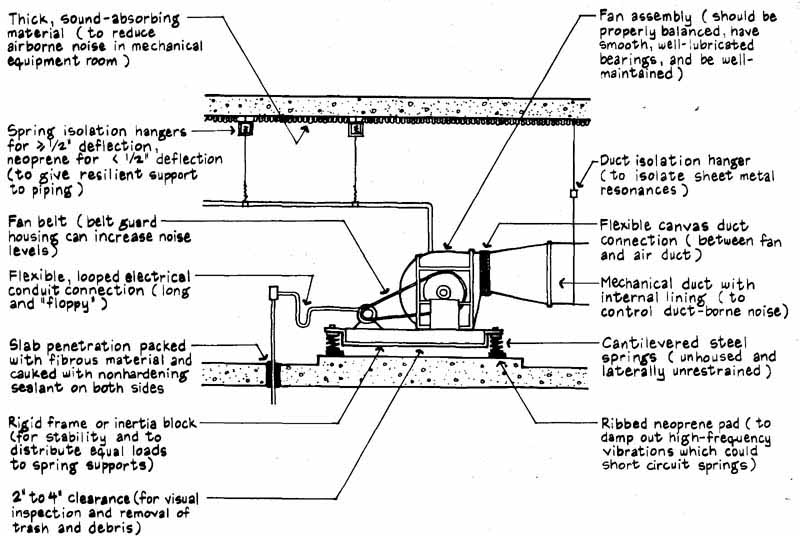Locate mechanical rooms on or below grade, far away from sensitive areas. Size mechanical rooms so they will have sufficient floor space and vertical clearance for smooth operation, inspection, and maintenance of all equipment. Do not place fans close to walls where sound energy can build up in the narrow space between fan and wall. Additionally, control sound buildup by treating ceiling and walls with thick, sound-absorbing materials. Often glass fiberboard or mineral fiberboard without a factory-applied finish can be used.

Buffer zones, such as non-sensitive corridors, storage rooms, and the like, can be used to reduce airborne noise transmission from mechanical rooms. En closing constructions should normally consist of heavy walls (e.g., masonry or concrete) and heavy floor-ceilings. When fan rooms are used as return air plenums, mufflers or lined elbows may be needed to reduce noise at all openings into the fan room.
Next: Cross Talk
Prev: Noise Sources in Ducts